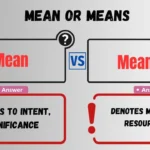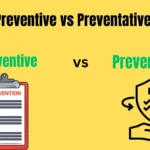Understanding the subtle differences between phrases can sometimes be challenging, especially when they seem so similar. Today, we dive deep into two such phrases: ‘accessible to’ and ‘accessible for’. By the end of this guide, you’ll have a clear understanding of how to use these phrases correctly and effectively.
Understanding the Basics: What Does ‘Accessible’ Mean?
The term ‘accessible’ is versatile and crucial in various contexts, from physical spaces to information and services. At its core, ‘accessible’ refers to something that can be reached, approached, or used. Here’s a closer look:
Definition of ‘Accessible’
According to the Cambridge Dictionary:
- Accessible: “Able to be reached or easily got to.”
- In broader terms, it can also mean “able to be understood or appreciated.”
Contextual Use
‘Accessible’ can apply to numerous situations:
- Physical Access: A building with ramps for wheelchair users.
- Information: Data available on a website.
- Services: Programs available to all members of a community.
‘Accessible to’ vs. ‘Accessible for’: A Comparative Analysis
When deciding between ‘accessible to’ and ‘accessible for’, context is key. Both phrases deal with accessibility, but they are used differently.
Common Usage
- ‘Accessible to’: This phrase often refers to the individuals or groups who can reach or use something.
- Example: “The library is accessible to students and faculty.”
- ‘Accessible for’: This phrase usually pertains to the purpose or suitability of something for a specific group or situation.
- Example: “The program is accessible for people with disabilities.”
Key Differences
- Focus:
- ‘Accessible to’ focuses on the user or recipient of accessibility.
- ‘Accessible for’ emphasizes the purpose or suitability of the access.
- Usage:
- ‘Accessible to’: “The event is accessible to everyone.”
- ‘Accessible for’: “This guide is accessible for beginners.”
‘Accessible for’: Common and Exclusive Uses
General Purpose
The phrase ‘accessible for’ is used to describe the purpose or suitability of something:
- Educational Materials: “The online course is accessible for learners of all levels.”
- Public Spaces: “The park is accessible for families with young children.”
Duration Indication
‘Accessible for’ can also denote a time period during which something remains available or usable:
- Temporary Accessibility: “The exhibit will be accessible for three months.”
Examples
| Situation | Usage |
| Time Period | “The offer is accessible for a limited time only.” |
| General Suitability | “The app is accessible for users with visual impairments.” |
Spotlight on ‘Accessible to’: Specific Applications
Detailed Definition
‘Accessible to’ indicates who can reach or make use of something:
- Public Services: “The city’s public transport is accessible to all residents.”
- Information: “The research paper is accessible to scholars worldwide.”
Specificity
This phrase is often used to highlight specific groups or individuals who can use or benefit from something:
- Accessibility Features: “The website is accessible to people with disabilities through screen readers.”
Examples
- Workplace: “The office is accessible to employees who use wheelchairs.”
- Libraries: “The archives are accessible to registered researchers.”
Additional Meanings and Nuances of ‘Accessible to’
Broader Uses
‘Accessible to’ can also convey nuances beyond physical or direct accessibility:
- Digital Content: “The e-books are accessible to users with various devices.”
- Cultural Events: “The festival is accessible to all, including those with hearing impairments.”
Contextual Variations
Depending on the context, ‘accessible to’ might imply:
- Ease of Access: “The document is accessible to anyone with the link.”
- Inclusivity: “The program aims to be accessible to marginalized communities.”
‘Accessible for’: Dual Purposes Explored
Dual Use
‘Accessible for’ serves two main functions:
- Suitability: Indicating that something is designed to be used by a specific group.
- Example: “The software is accessible for tech-savvy users.”
- Time-Based Availability: Highlighting a duration during which something remains usable.
- Example: “The system will be accessible for maintenance until noon.”
Clarification
To avoid confusion, consider:
- Suitability: “The event is accessible for all age groups.”
- Time-Based: “The offer is accessible for the next two weeks.”
The Less Common ‘Accessible From’: An Overview
Definition and Use
‘Accessible from’ specifies a starting point or location from which something can be reached or used:
- Physical Locations: “The building is accessible from the main road.”
- Digital Access: “The report is accessible from any device with internet access.”
Examples
| Context | Usage |
| Physical Access | “The venue is accessible from the city center.” |
| Digital Content | “The online platform is accessible from multiple devices.” |
Comparing Usage Trends: Insights from Google Ngram Viewer
Historical Trends
Using the Google Ngram Viewer, we can track how the usage of ‘accessible to’ and ‘accessible for’ has changed over time. Here’s what we found:
- ‘Accessible to’: This phrase has seen a steady increase in use, reflecting its broader application in discussions about accessibility.
- ‘Accessible for’: Usage has also risen, particularly in contexts emphasizing suitability and duration.
Geographical Variations
Regional differences in usage are evident:
- American English: Prefers ‘accessible to’ for most contexts.
- British English: Shows a more balanced use of both phrases.
Final Advice: Mastering ‘Accessible to’ and ‘Accessible for’
Summary
Understanding when to use ‘accessible to’ and ‘accessible for’ can enhance clarity in your communication. Remember:
- ‘Accessible to’: Focuses on who can reach or use something.
- ‘Accessible for’: Highlights the purpose or time-related aspects.
Tips for Correct Usage
- Context Matters: Choose based on whether you’re focusing on the user or the purpose.
- Avoid Confusion: When in doubt, consider whether the emphasis is on who can access something or how suitable it is for a specific group or period.
Call to Action
Start applying these distinctions in your writing and communication to ensure your message is clear and precise.
By following this guide, you’ll be well-equipped to navigate the nuances of ‘accessible to’ and ‘accessible for’, ensuring your language is both accurate and effective.

Sophie Mitchell, a seasoned English educator, brings her passion for language and years of teaching expertise to TalkSpeaker. With a knack for simplifying grammar and expanding vocabulary, she empowers learners to master English with confidence.




